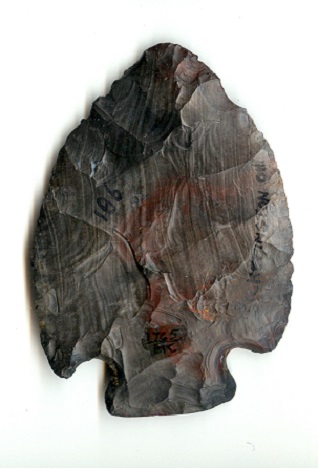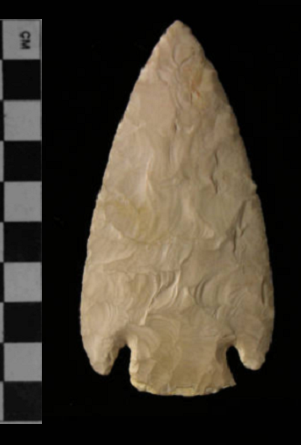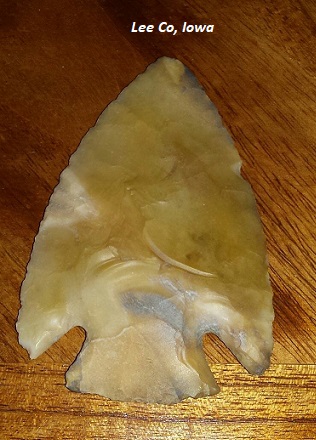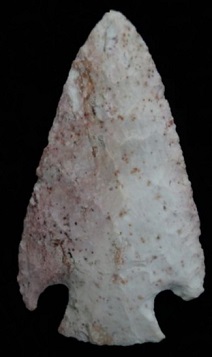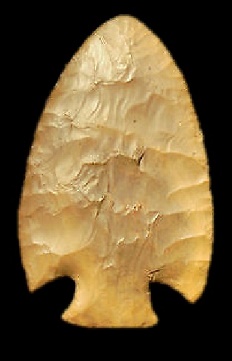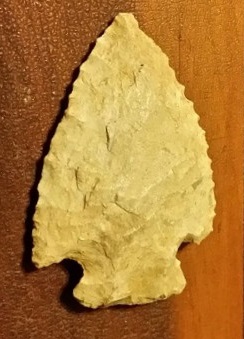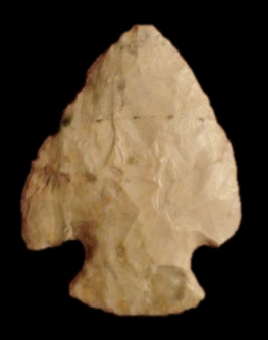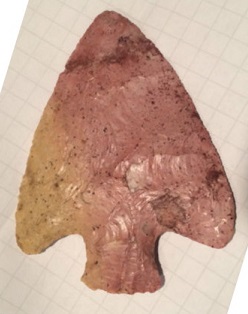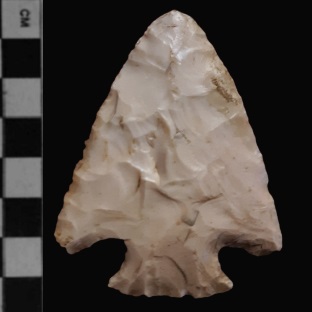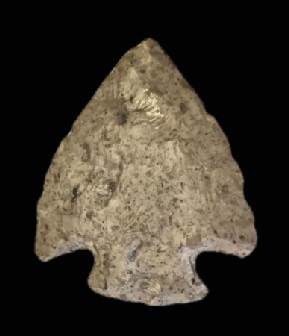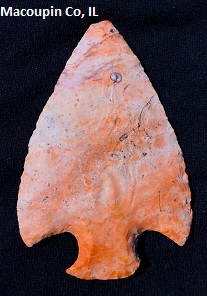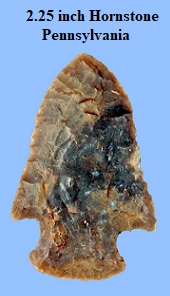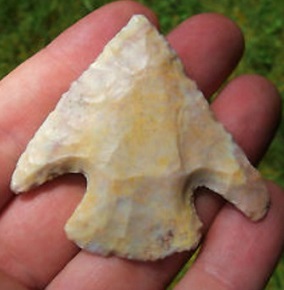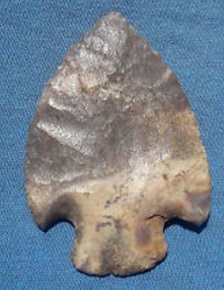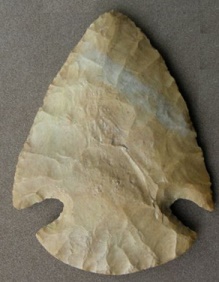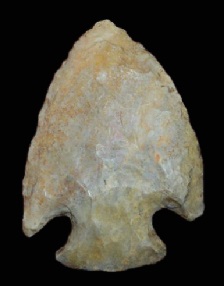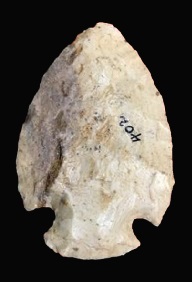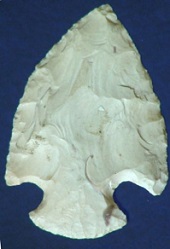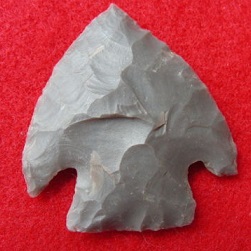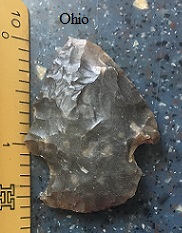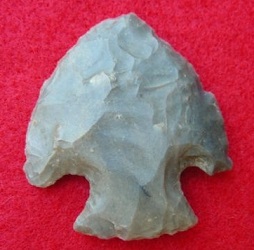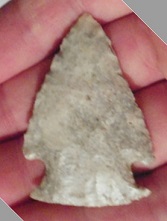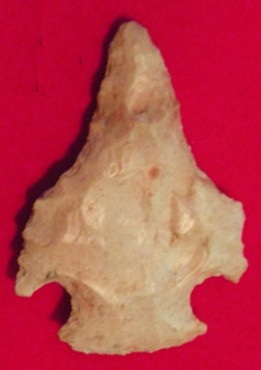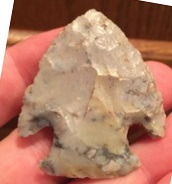Name Details:
Named By: Edward G. Scully
Named For: Type Site
Date Identified: 1951
Type Site: Snyders Hopewell site, Calhoun County, Illinois
Snyders
Cluster: Snyders Cluster
Commonly Utilized Material:
Exotic materials such as Burlington chert, Cobden chert,
Hixton Silicified sandstone, and Knife River flint. In addition to
exotic materials, locally available materials may be used including Flint
Ridge chalcedony, Onodaga chert, and Upper Mercer cherts. Heat
treatment is commonly used.
Date:
Cultural Period:
2,500 - 1,500 B.P.
Late Archaic to Woodland
Roman Warm
Hopewell Culture
Glacial Period:
Culture:
Outline is Representative of Size and Shape:
Description of Physical Characteristics and Flaking Pattern:
This is a
broad medium to large (typically 2.5 to 3 inches) corner notch point with a triangular to ovate appearance. This is generally a thin point with a flattened cross section, but some examples
may have an elliptical cross section. The shoulders are barbed with a short expanding stem. The base is convex. This point is manufactured with well-executed but random
percussion flaking and marginal pressure retouch forming a random flaking pattern.
This point is commonly made of quality material and has a high quality of workmanship.
Size Measurements: Length - 42 to
150
mm (average 57 mm), Stem Length - 12 to 26 mm (average 15 mm), Width -
31 to 60 mm (average 40 mm), Stem Width - 21 to 40 mm (average
27 mm, typically 1/2 to 1/3 the total width), Neck Width - 19 to 25 mm,
Thickness - 8 to 9 mm
Distribution:
Distribution Comments:
This point is most common in the Ohio River Valley and into the Great Lakes areas and in area associated with the Hopewell culture. It may also be found in the upper Mississippi River valley, Arkansas River valley,
and the Tennessee River Valley.
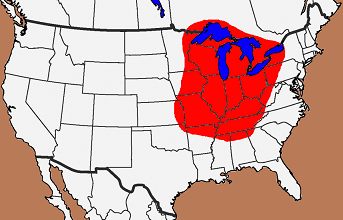
Similar Points:
Amos, Becker, Big Creek, Cupp, Dayton, Epps, Gibson, Helton, Kings, Kirk Corner Notch, Lafayette, Motley, Norton, St Charles Dovetail, Stilwell, Thebes, Warrick Additional Comments:
These points may have served many different purposes from knives to scrappers or points to ceremonial objects. The Snyders point has many different variations that served different purposes or covered different
time spans. It is felt that the Hopewell and Snyders points may have been used in ceremonial purposes while the Affis Snyders point and the Manker point were more of the daily use points. (W2).
Others feel that the variations of points (Affis Snyders and Manker) may have been used by other cultures and not be true variations of the point (W11).
Perino feels that the Big Creek point and the Grand point need to be included in the Snyders cluster. Both points morphologically correlates with this cluster, but the Big Creek point is an older point, the
Grand point does correlate with the time frame of this cluster. For this reason, the Grand point was included and the Big Creek point was not included in this cluster.
The North Blade if thought to be a Snyders preform.
Point Validity: Valid Type
Sayles was a pioneering avocational “field” archaeologist who conducted one of the first archaeological surveys of Texas. He was the co-founder
of the Texas Archaeological Society. This type was named in a professional publication and has many professional references. This is considered a valid type.
.
Age Details:
Morrow (2016) notes "Snyders points are an iconic
artifact of the Middle Woodland Havana Hopewell tradition. This is commonly
dated between about 200 B.C.E. and 200 C.E. "
References: (See Reference Page, Entry Number):
23, 30, 37, 168, 177, W2, W11, W14
Snyders Projectile Point, Snyders Arrowhead

